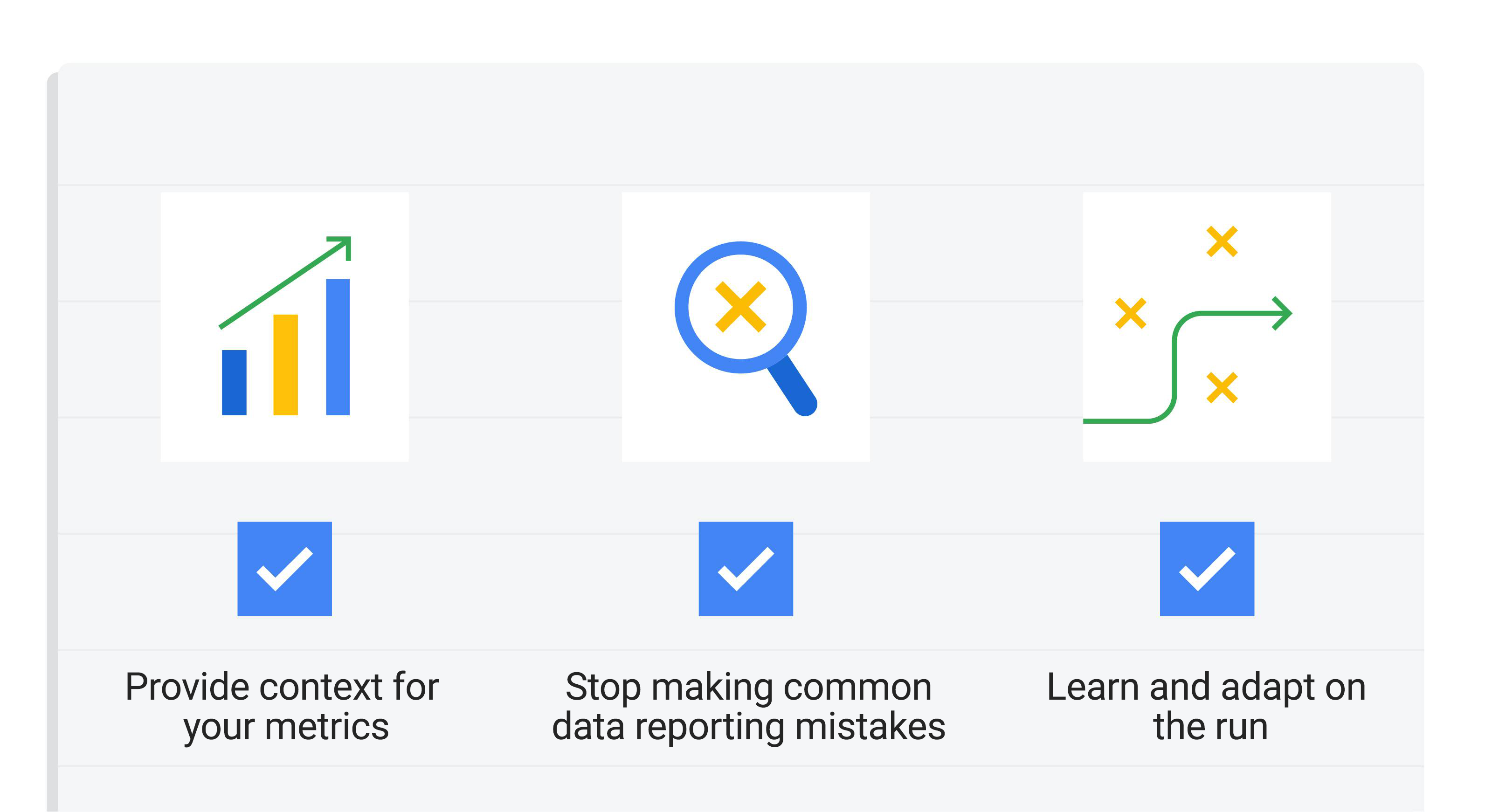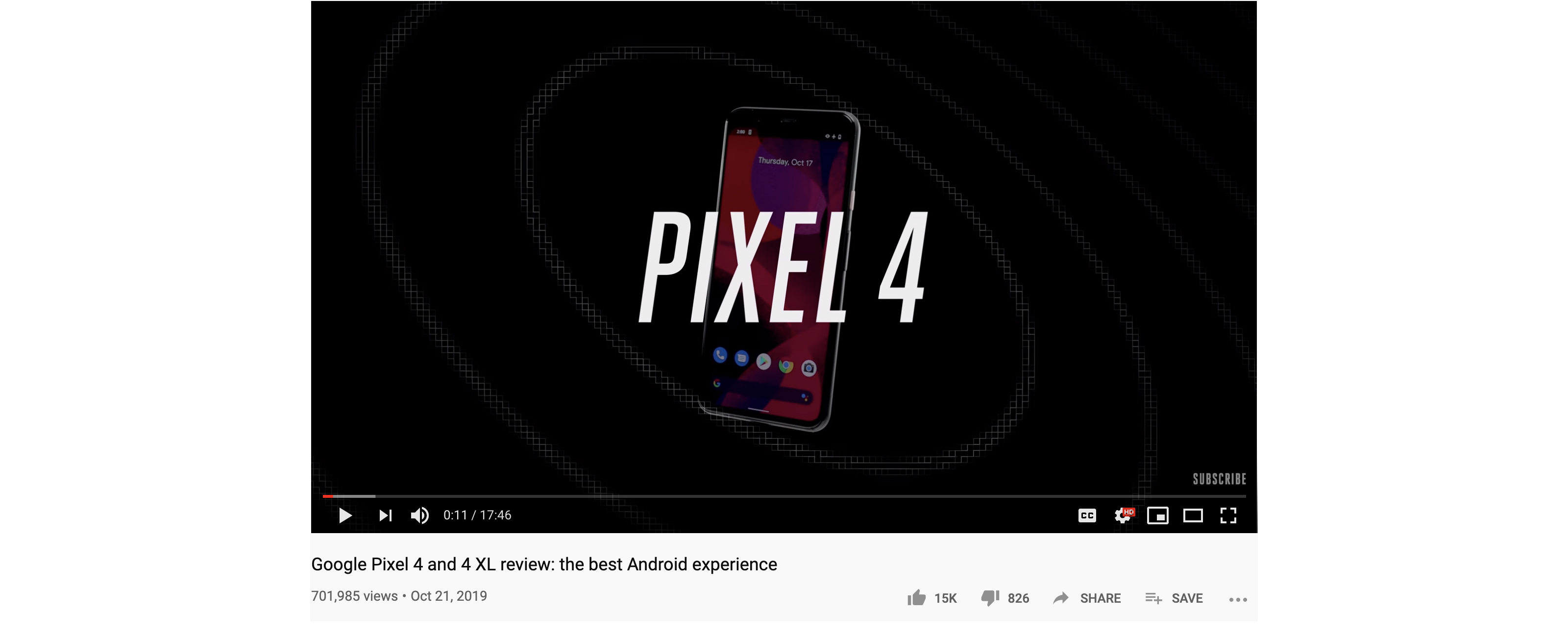People have been making New Year’s resolutions since the time of the ancient Babylonians. Usually those resolutions involve something along the lines of losing weight or saving money.
But for 2020, why not set some achievable goals for your measurement strategy? I have three suggestions to get you started. Accomplishing these goals will bring you professional joy and boost your company’s bottom line.
Three measurement resolutions all marketers should make for 2020

Resolution 1: Provide context for your metrics
We’ve all received one of those self-congratulatory emails from a colleague informing us that their latest ad campaign had 10,000 on-target impressions, or the six-second video they ran had a 60% completion rate.
Whenever I see one, the first thing I ask myself is: What do these numbers even mean? Are they good or bad? Should we be patting ourselves on the back or trying to figure out what went wrong?
That’s why the first measurement resolution I’d like us all to make for 2020 is this: Always provide context for your metrics. There are many strategies you can draw on to do this. The simplest is to use industry benchmarks.
This doesn’t tell us much: Our six-second ad had a 60% completion rate.
This tells us a lot: Our six-second ad had a 60% completion rate; the industry benchmark is 81%.
Ouch. But it’s a good “ouch”, Now, you’ll know you have to dig into your creative to see what could be improved, analyse your targeting strategy to find out what went wrong, and start researching great video ads to see what they have in common. And that will help you improve future performance — all from a tiny bit of context.
Once you have more experience, you can start setting your own goals. If your last email campaign had an average open rate of 20%, you can set a goal of 23%. Now, when you report performance, here’s what you’ll say: “Our average open rate for February 2020 was 25% compared to our goal of 23%.” Data with context — it’ll get you promoted.
Here’s one last favourite piece of context of mine: Cost.
So your fancy, contextually relevant, machine-learning based, dynamic landing pages generated 1.5 million engaged views in a month compared to just 1 million for your old static landing pages. Hurray?
Let’s add context: After factoring in development and maintenance costs, your new dynamic pages have a cost per engaged view of £5 and the old static ones have a cost per engaged view of £1.
That is the magic of context. A little bit of pixie dust that helps us make smarter decisions.
Resolution 2: Stop making common data reporting mistakes
Marketing analysts have to boil down so much complexity into simple stories. That’s why it breaks my heart to see our hard work undercut by common, easily avoidable mistakes.
So let me share my top two most-annoying reporting mistakes. They’re both easily avoidable, so you can keep your 2020 resolution accomplishment rate at 100%.
First, stop reporting percentages alone.
“Our new and improved digital campaign led to a 100% increase in sign-ups.” By itself, that information is almost entirely useless. Did the number of subscribers increase from 100 to 200? Or from 10,000 to 20,000? Slightly different scenarios, right?
Reporting percentages by themselves, without any baselines, is a mistake. At best, it suggests you’re lacking even a basic grasp of data and the role it plays in decision-making. At worst, you look sneaky, as though you’re trying to spin the data to tell a more flattering story.
Instead, marry percentages with the most relevant raw numbers. It is magical.
My second recommendation is to ensure your data reporting doesn’t contain misaligned altitudes. What do I mean by this? Here's an example. In an analysis someone just sent me, there’s a table of metrics. In the column showing revenue, it has 12.3M, 3.5M, 145K, 2M, 12K, 674K.
Almost every number is expressed using a different altitude. This means the person reading the report will have to do extra work to interpret the data. What you should show is 12.3M, 3.5M, 0.15M, 2.0M, 0.01M, 0.67M.
Everything’s aligned at the same altitude, making the data easier to compare and reducing the processing load.
Here’s another, everyday example of misaligned altitude. We all watch YouTube videos. Check out the numbers for how many people liked or disliked this one, and how those numbers are at misaligned altitudes:

In a subtle way, it gives far more weight to the negative feedback, and so is misleading. If the likes and dislikes were instead expressed at the same altitude — 14K and 0.7K — it would give a much more accurate portrayal of reality.
The way we choose to present data has a big impact, drawing our attention to one thing over another. So the next time you’re sharing a campaign summary with your CMO, check to make sure the altitudes of the data you’re reporting are aligned.
Resolution 3: Learn and adapt on the fly
If you’re anything like the people on my team, you’ll spend a lot of time planning and refining your marketing campaigns. Of course, you’ll also have in place a smart measurement plan, which will no doubt outline your KPIs, targets and segments. So far, so good.
Traditionally, your next step would be to run the campaign before waiting until the end to figure out what happened.
Big mistake. Digital marketing campaigns throw off so much rich data right from the start. Increasingly, television and print ones do too. That means that the minute we hit the launch button, we can start learning and making changes to get more bang for our buck.
So in 2020, commit to not waiting. If you aren’t changing 60% of your ad creative, targeting and budget based on lessons from your first 30% of spend, you’re missing the boat. In fact, you could be missing the entire ocean.
Building teams and processes that are agile enough to learn and adapt on the go is hard. But it will have a huge impact on the profitability delivered by your marketing strategy.
Become smarter advertisers in 2020
If we want to become smarter advertisers in 2020, we need to be able to better understand and communicate the impact our work has. And that means improving how we measure the ways in which marketing moves our business forward or holds it back. By sticking to these three resolutions, you’ll be well on your way to creating a competitive advantage for your company.
Carpe diem!






